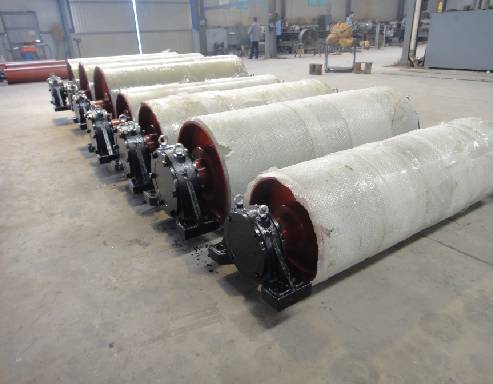 Afrikaans
Afrikaans  Albanian
Albanian  Amharic
Amharic  Arabic
Arabic  Armenian
Armenian  Azerbaijani
Azerbaijani  Basque
Basque  Belarusian
Belarusian  Bengali
Bengali  Bosnian
Bosnian  Bulgarian
Bulgarian  Catalan
Catalan  Cebuano
Cebuano  Corsican
Corsican  Croatian
Croatian  Czech
Czech  Danish
Danish  Dutch
Dutch  English
English  Esperanto
Esperanto  Estonian
Estonian  Finnish
Finnish  French
French  Frisian
Frisian  Galician
Galician  Georgian
Georgian  German
German  Greek
Greek  Gujarati
Gujarati  Haitian Creole
Haitian Creole  hausa
hausa  hawaiian
hawaiian  Hebrew
Hebrew  Hindi
Hindi  Miao
Miao  Hungarian
Hungarian  Icelandic
Icelandic  igbo
igbo  Indonesian
Indonesian  irish
irish  Italian
Italian  Japanese
Japanese  Javanese
Javanese  Kannada
Kannada  kazakh
kazakh  Khmer
Khmer  Rwandese
Rwandese  Korean
Korean  Kurdish
Kurdish  Kyrgyz
Kyrgyz  Lao
Lao  Latin
Latin  Latvian
Latvian  Lithuanian
Lithuanian  Luxembourgish
Luxembourgish  Macedonian
Macedonian  Malgashi
Malgashi  Malay
Malay  Malayalam
Malayalam  Maltese
Maltese  Maori
Maori  Marathi
Marathi  Mongolian
Mongolian  Myanmar
Myanmar  Nepali
Nepali  Norwegian
Norwegian  Norwegian
Norwegian  Occitan
Occitan  Pashto
Pashto  Persian
Persian  Polish
Polish  Portuguese
Portuguese  Punjabi
Punjabi  Romanian
Romanian  Russian
Russian  Samoan
Samoan  Scottish Gaelic
Scottish Gaelic  Serbian
Serbian  Sesotho
Sesotho  Shona
Shona  Sindhi
Sindhi  Sinhala
Sinhala  Slovak
Slovak  Slovenian
Slovenian  Somali
Somali  Spanish
Spanish  Sundanese
Sundanese  Swahili
Swahili  Swedish
Swedish  Tagalog
Tagalog  Tajik
Tajik  Tamil
Tamil  Tatar
Tatar  Telugu
Telugu  Thai
Thai  Turkish
Turkish  Turkmen
Turkmen  Ukrainian
Ukrainian  Urdu
Urdu  Uighur
Uighur  Uzbek
Uzbek  Vietnamese
Vietnamese  Welsh
Welsh  Bantu
Bantu  Yiddish
Yiddish  Yoruba
Yoruba  Zulu
Zulu Heavy Duty Conveyor Belt Rollers for Enhanced Industrial Efficiency and Durability
Heavy Duty Conveyor Belt Rollers Essential Components for Efficiency and Durability
In the world of industrial operations, efficiency and reliability are priorities that cannot be compromised. One crucial component that plays a significant role in achieving these goals is the heavy-duty conveyor belt roller. These rollers are integral to the smooth functioning of conveyor systems, which are widely used across various sectors, including manufacturing, mining, logistics, and agriculture. In this article, we will explore the importance, types, benefits, and maintenance of heavy-duty conveyor belt rollers.
Importance of Conveyor Belt Rollers
Conveyor belt rollers are essentially cylindrical components that provide support and reduce friction for the conveyor belt as it moves products, materials, or goods. They help maintain the belt's alignment, contribute to consistent movement, and extend the lifespan of the conveyor system. Using high-quality heavy-duty rollers ensures that a conveyor can handle heavy loads and operate under harsh conditions without frequent breakdowns.
Types of Heavy Duty Conveyor Belt Rollers
Heavy-duty conveyor belt rollers come in a variety of types to cater to different operational needs
1. Idler Rollers These rollers support the conveyor belt and materials being transported. Idler rollers can be either crowned or flat, depending on the application.
2. Drive Rollers These are powered rollers that drive the belt forward. They are crucial in any conveyor system, as they provide the needed force to move materials across various distances.
3. Return Rollers As the name suggests, these rollers allow the return side of the conveyor belt to glide back to the loading area. They ensure that the entire system remains efficient and functional.
4. Impact Rollers Designed to absorb the shock and impact of heavy materials being loaded onto the conveyor belt, these rollers help prevent damage to the conveyor system.
5. Guide Rollers They ensure the belt remains in line and does not deviate off its intended path, thus preventing misalignment and subsequent wear-and-tear.
Benefits of Heavy Duty Conveyor Belt Rollers
Adopting high-quality heavy-duty conveyor belt rollers offers numerous advantages
1. Increased Efficiency By reducing friction and ensuring smooth movement of materials, heavy-duty rollers help improve the overall efficiency of conveyor systems. This leads to faster processing times and increased productivity.
heavy duty conveyor belt rollers

2. Enhanced Durability Heavy-duty rollers are designed to withstand rigorous operational conditions. Their robust construction reduces the frequency of maintenance and replacements, ultimately leading to lower operational costs.
3. Reduced Downtime The reliability of heavy-duty rollers minimizes breakdowns and ensures continuous operation. This is crucial for sectors where time is of the essence and any downtime can translate to significant financial losses.
4. Safety Well-maintained conveyor belt rollers reduce the risk of accidents caused by spills or equipment failure. This enhances workplace safety, which is a fundamental concern in any industrial environment.
5. Customizability Heavy-duty rollers can often be customized to meet specific needs related to load capacity, roller diameter, and material construction. Businesses can tailor their conveyor systems according to their unique requirements.
Maintenance of Heavy Duty Conveyor Belt Rollers
To maximize the performance and lifespan of heavy-duty conveyor belt rollers, regular maintenance is essential
1. Regular Inspections Conduct routine checks for wear, alignment, and any damage. Early detection can prevent significant issues down the line.
2. Lubrication Keep the rollers well-lubricated to reduce friction and ensure smooth operation. This prevents overheating and excessive wear.
3. Cleaning Keeping the rollers clean from dirt, debris, and contaminants is vital for maintaining their functionality. Scheduled cleaning can prevent material build-up that may affect performance.
4. Replacing Worn Parts It’s crucial to replace any damaged or worn rollers promptly to maintain system efficiency and avoid more extensive repairs.
5. Monitoring Load Weight Ensure that the loads transported do not exceed the recommended weight limits for the rollers, as excessive weight can lead to premature wear and damage.
Conclusion
Heavy-duty conveyor belt rollers are indispensable elements in any industrial setting that relies on conveyor systems. Their ability to enhance efficiency, improve safety, and reduce operational costs makes them a worthy investment. By understanding their types, benefits, and maintenance requirements, businesses can ensure that their conveyor systems operate at peak performance, ultimately leading to better productivity and profitability.
-
Revolutionizing Conveyor Reliability with Advanced Rubber Lagging PulleysNewsJul.22,2025
-
Powering Precision and Durability with Expert Manufacturers of Conveyor ComponentsNewsJul.22,2025
-
Optimizing Conveyor Systems with Advanced Conveyor AccessoriesNewsJul.22,2025
-
Maximize Conveyor Efficiency with Quality Conveyor Idler PulleysNewsJul.22,2025
-
Future-Proof Your Conveyor System with High-Performance Polyurethane RollerNewsJul.22,2025
-
Driving Efficiency Forward with Quality Idlers and RollersNewsJul.22,2025





























